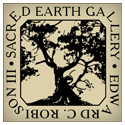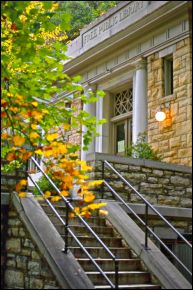If you are looking for things to do that will inspire you then Northwest Arkansas may be just the place to visit. If you are not familiar with the state you may think that you have to go to Little Rock, Arkansas to find cultural attractions but that is not true. In fact there are many tourist places in Arkansas that encourage tourists to discover unique ways of life through interesting and engaging cultural activities. Cultural activities keep American heritage alive. Consider participating in one of these five cultural activities with roots in Ozark living:
1. Foreign Interests
Who thought you could travel the world from a small town. In the quirky little town of Eureka Springs, they enjoy experiencing different cultures through foreign film. From Jordan to Demark to France and beyond, foreign films touch on subjects that are important to all people, regardless of where we call home. Don’t speak Dutch? Don’t worry, the films are subtitled. You might be surprised how much you will understand just paying attention to body language. Sometimes, words get in the way. Films are screened in the Eureka Springs Carnegie Library. The library is a beautiful building located in the heart of a quaint little mountain town. Nestled next to the Crescent Spring, one of the many natural springs this town was named for, the library sits at the original entry to the famous Crescent Hotel which sits high on the mountain overlooking the town.
Speaking of films, the 1929 Lyric Theater in Harrison was built to screen the “talkies.” Find the Lyric Theater on the Arkansas Art Trail.
2. Music Traditions
Northwest Arkansas is a mountainous region with a strong music tradition. Today, music is still an important part of everyday life. From classical to old-time music, intimate gatherings enjoy each other as they play acoustic instruments to sonatas, ballads, and folk songs. The Cello Choir is a group of cellists who meet every Saturday at 11am in the beautiful Gavioli Chapel on the historic loop in Eureka Springs. Under diffused light streaming through stained glass, nine or so cellos played by people of all ages play four or more parts. People stroll in and out to listen just a few minutes or the entire hour.
Just outside of Eureka Springs, a hootenanny meets on the historic Berryville town square. A hootenanny, also called a wingding, is an informal group of folks of all ages playing banjos, guitars, fiddles and what have you. Mostly folk music, the hootenanny meets every Friday 7-9pm at the old Grand View Hotel.
Discover endearing American life visiting several small town squares like Eureka Springs, Bentonville, and Harrison on the Arkansas Art Trail. A hootenanny is a great way to get to know one of Arkansas’ small towns.
3. Master Artists
The world’s newest art museum just opened in Northwest Arkansas. Crystal Bridges Museum of American Art houses an amazing collection of American art ranging from the colonial period through today. With a focus on education, Crystal Bridges offers guests a chance to Draw in the Galleries. Study elements of art while looking at masterworks. Class subjects include Landscape, Portraiture, and Figure Drawing. They are offered every month and registration is required.
Crystal Bridges Museum of American Art is Day One of the Arkansas Art Trail.
4. Native American Vessels
Basketmaking or basket weaving is an ancient craft. The Cherokee people of native America have long been respected for their basketmaking skills and best known for their complex “double weave” baskets. Often made from white oak, baskets were valuable articles of commerce throughout history. Today, their value ranges from utilitarian to works of art. Learn to make your own authentic Cherokee “double weave” basket at Fire Om Earth studios and become a link in the chain that keeps American heritage alive.
Two Arkansas Art Trail sites in particular have Native American significance. Native Americans passed through Pea Ridge National Military Park following the Trail of Tears. Blue Spring Heritage Center near Inspiration Point was site to numerous Native American settlements. See artifacts and hear some of their stories at Blue Spring.
5. Love of the Land
Stewardship and environmentally conscious thinking is part of today’s culture. Recycling is essential to reducing physical and financial waste and preserves the beautiful natural resources of the Ozark Mountains for future generations. In that spirit, Crystal Bridges Museum of American Art teaches art using recycled materials. Bring Your Own Art and make a collage using found objects.
Crystal Bridges Museum of American Art is just one stop along the Arkansas Art Trail where nature and art intersect. Crystal Bridges also maintains trails. Discover the Arkansas Art Trail and Crystal Bridges Art Trails.
One of the best attractions in Arkansas is the Arkansas Art Trail. Ten stops take you to places where nature and art come together. See breathtaking vistas, mountain views, nationally significant sites and architectural features on the trail.








